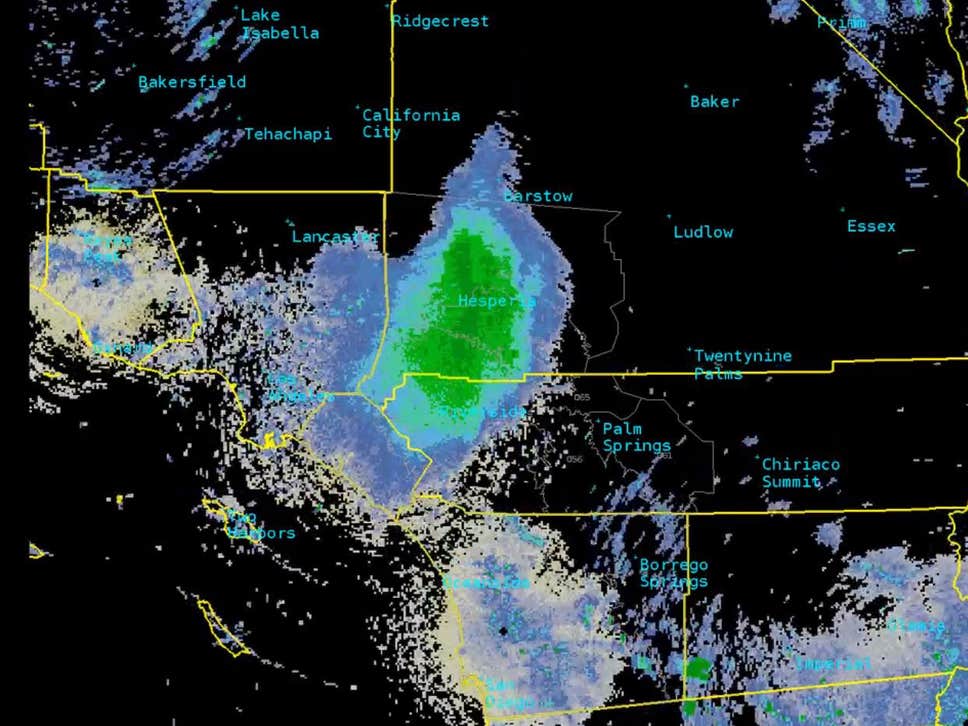
At about 9:00 p.m. on June 4th, 2019, Joe Dandrea, a meteorologist working the late shift at the National Weather Service (NWS) station just north of San Diego, CA, noticed what appeared to be a large rain cloud on the radar. However, upon peering closer, he realized the "cloud" comprised a huge mass of tiny, flying dots.
Curious to find out what had just crossed his screen, Dandrea contacted a weather spotter near Wrightwood, CA in the San Bernardino Mountains, where the massive blob appeared to be. Part of the NWS's SKYWARN volunteer program, spotters are trained to keep their communities safe by informing the agency of any local weather hazards, particularly severe storms. Dandrea's suspicions proved right. The "rain cloud" was a swarm of ladybirds flying in synch.

Though the bloom appeared to be a massive 80 miles by 80 miles on the radar, Dandrea believes the lady beetles were not flying in a concentrated mass that big. He suspects the ladybugs were spread throughout the sky, flying at altitudes of between 5,000 and 9,000 feet, with the most concentrated mass measuring just 10 miles wide. “I don’t think they’re dense like a cloud,” Dandrea told the Los Angeles Times. “The observer there said you could see little specks flying by.”
Given the distance, it was hard to determine what ladybird species was responsible for the phenomenon. One possibility is the adult convergent lady beetles that migrate from the Sierra Nevada mountains to Los Angeles County's San Fernando Valley every spring in search of aphids and to lay eggs. In early summer, once the food source declines, the hungry beetles leave in droves to higher elevations.

This is not the first time the powerful NWS radars have picked up non-weather targets. Past "angels," as the agency calls them, include migrating birds, road traffic, and even sunrises and sunsets, which according to the National Oceanic and Atmospheric Administration, "Show up on National Weather Service radar screens as a spike in the direction of the sun."
Resources: latimes.com, ABCnews.com
